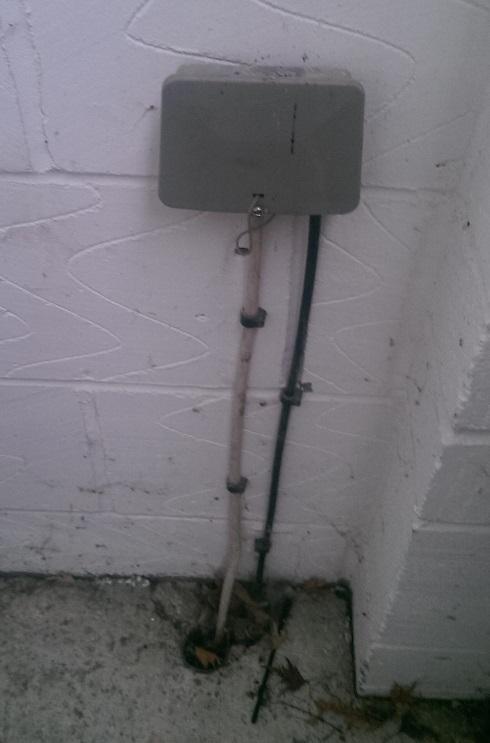As far as I can tell, the property I have just moved into has no master socket. This seems a bit strange as it's only 10-12 years old and I would have thought it should have one? I'm not 100% sure where the demarcation point is because of this.
The line from the street enters into the garage into this small gray box.
From there the white cable leaves the box, runs under the garden and into the utility cupboard. The wire are connected straight into the Krone blocks which link in all the other phone sockets in the house (The bundle from the outside box is the thick collection of wires on the outside left of the loom, 2 wires from the bundle join a Krone block at the bottom).
There is no master socket. This raises my first question of what is BT's and what is ours? It also means we are lacking the standard surge protection.
What I am thinking of doing is putting in a master socket before the Krone blocks (i.e. moving the thick bundle to go to the socket, and using the extension from the socket to join the Krone and the rest of the plates around the house). I intend to do centralised filtering at the new socket, so house faceplates are phone only. Not sure which faceplate/socket I need for this?
The goal is to have the ADSL modem/router in this cupboard and feed straight form the new socket.
The line from the street enters into the garage into this small gray box.
From there the white cable leaves the box, runs under the garden and into the utility cupboard. The wire are connected straight into the Krone blocks which link in all the other phone sockets in the house (The bundle from the outside box is the thick collection of wires on the outside left of the loom, 2 wires from the bundle join a Krone block at the bottom).
There is no master socket. This raises my first question of what is BT's and what is ours? It also means we are lacking the standard surge protection.
What I am thinking of doing is putting in a master socket before the Krone blocks (i.e. moving the thick bundle to go to the socket, and using the extension from the socket to join the Krone and the rest of the plates around the house). I intend to do centralised filtering at the new socket, so house faceplates are phone only. Not sure which faceplate/socket I need for this?
The goal is to have the ADSL modem/router in this cupboard and feed straight form the new socket.




